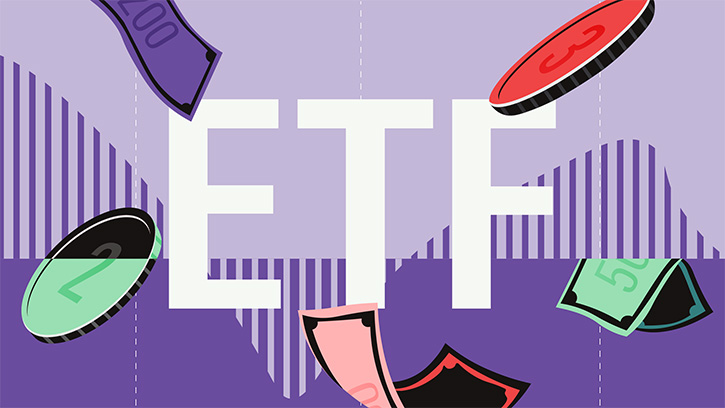Everyone has a different definition of value. For example, you and your best friend are comparing footwear (or supermarkets, plumbing services, or even housing). You call your shoes a deal because you got them on sale—50% off! Your friend, meanwhile, considers her shoes a value buy simply because she paid less than she would have for a comparable brand.
Fund managers who buy value stocks express similar differences of opinion. All value managers buy stocks that they believe are worth significantly more than the current share price, but they tend to argue about just what makes a stock a good deal. How a manager defines value will determine what his or her portfolio includes and, ultimately, how the fund performs.
Why shadings matter
Two large-cap funds that might both fall into the value side of the Morningstar Style Box might also record startlingly different performances due to different definitions of value and different investment time horizons. For example, one manager might tend to look at value by examining price ratios, such as price/earnings and price/sales, and try to identify companies s/he believes can deliver positive surprises to drive those valuations higher in the future. The manager of the other large-cap value fund, meanwhile, might also emphasise cheap stocks but might have a stricter definition of value that directs them to seek dominant franchises that are trading at a discount of 30% or greater to their intrinsic worth. A stricter definition such as this might also mean they're willing to sit on outsized cash stakes when opportunities are scarce—in other words, if they don't see something they like, they won't play in the market.
Value strategies roughly divide into the relative-value and absolute-value camps. Not surprisingly, there are a lot of variations within each group.
Relative value
Fund managers practicing relative-value strategies compare a stock's price ratios (such as price/earnings, price/book, or price/sales) with a benchmark and then make a decision about the firm's prospects. In other words, value is relative. These benchmarks can include one or more of the following:
The stock's historical price ratios: Companies selling for lower ratios than usual can be attractive buys for value managers. Often, these companies' prices are lower due to some "bad news," to which the market often overreacts.
The company's industry or subsector: A manager may believe that a company is undeservedly cheap compared with its competitors. For example, when mobile-phone handset giant Nokia was hurt by an earnings miss in 2003, the managers of Lazard Equity bought it because it looked cheap relative to other technology stocks. Funds that look for companies that are cheap relative to their industry peers may well take on more price risk than absolute-value funds. For example, in early 2000, even though the technology sector as a whole was dramatically overvalued, a relative-value manager might have continued buying technology stocks that appeared cheap relative to other technology stocks.
The market: In this case, managers look for companies that appear attractively valued relative to the broader equity market, not just their industry peer groups. For such a manager, technology stocks wouldn't have been a likely place to find bargains in early 2000, even though many would have filled the bill for a manager seeking companies that were merely cheap relative to their industry peers. For these managers, a company may be attractively valued because of issues specific to its own operations that have depressed its share price or because it's in an out-of-favour industry. This scenario is common with cyclical sectors, such as industrials.
Absolute value
Managers such as Legg Mason Value's Bill Miller and the team at Longleaf Partners follow absolute-value strategies. They don't compare a stock's price ratios with something else. Rather, they try to figure out what a company is worth in absolute terms, and they want to pay less than that figure for the stock.
Absolute-value managers determine a company's worth using a variety of factors, including the company's assets, balance sheet, and likely future earnings or cash flows. They may also study what private buyers have paid for similar companies.
While Legg Mason Value and Longleaf Partners have owned some of the same companies, each takes a slightly different approach to absolute-value investing—which leads to different results.
When examining a company's growth prospects, Legg Mason's Miller is more forward-looking, and often more optimistic, than many of his peers. Thus, you'll find more high-growth stocks in this fund than you would in the portfolios of other absolute-value managers.
That difference has mattered quite a bit recently. In 2003, a year in which the market favoured technology stocks, Legg Mason Value beat Longleaf Partners by nearly 10 percentage points. In 2006, however, the situation was reversed, and Longleaf fared significantly better than Legg Mason Value.
When value managers sell
There are two chief reasons value managers will sell a stock: It stops being a value, or they realise that they made a bad stock pick.
Stocks stop being good value when they become what managers call fairly valued. That means that the stock is no longer cheap by whatever value measure the manager uses. For relative-value managers, that could mean that the stock has gained so much that its price ratios are now in line with industry norms. For an absolute-value manager, that could mean that the stock's price now reflects the absolute worth the manager has placed on the company.
A manager may also sell a stock because it looks less promising than it did initially. In particular, new developments may lead the manager to a less favourable evaluation of the company. Nevertheless, if the stock's price drops but the manager believes the company itself is still attractive, that may be a chance to buy even more of it.
For more investing classroom lessons on equities, bonds, funds and portfolio management, check out our Learning Centre.























